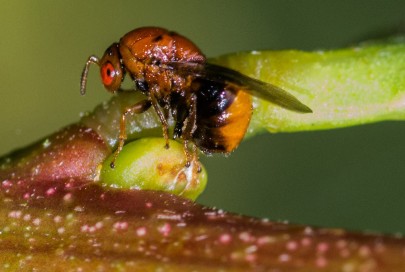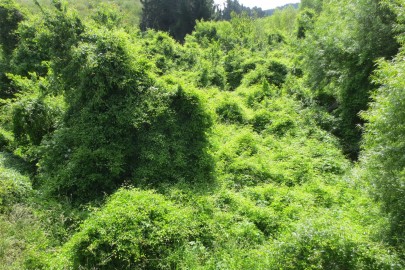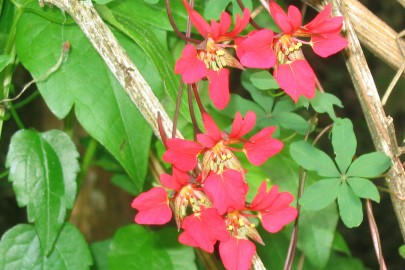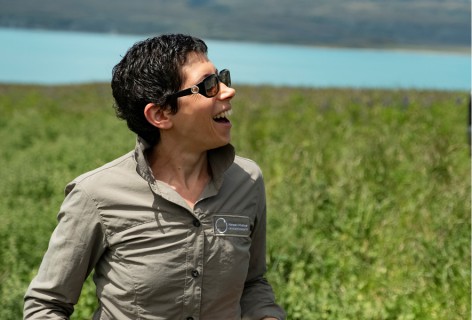All Systems Are Go for Multi-weed Biocontrol

Flower-bud-galling wasp for Sydney golden wattle
The NBC is the sole co-funder of this new multi-weed biocontrol programme. Formed in 2002, it is currently made up of 15 regional councils and unitary authorities, and the New Zealand Department of Conservation (DOC). Funds are contributed annually and are pooled to fund weed biocontrol programmes for prioritised target weeds that affect all of New Zealand. The NBC has invested over $9.5 million in weed biocontrol research since 2002, facilitating the release of 29 new agents for 17 target weeds. The leveraging of research funds for weed biocontrol from state investment programmes such as the old SFF, and now SFF Futures would not have been possible without co-investment from the NBC.
According to the Programme Leader, Ronny Groenteman, the process from project inception to contracting was exceptionally long, nearing 18 months. “Patience and many hours dedicated to developing the project plans and budgets finally paid off,” said Ronny. “We now have just over $2 million of MPI SFF Futures funding, along with $840 000 from the NBC for biocontrol research on weeds that impact the productive sector,” she added.
The project will run for 3 years and will focus on three work streams: i) progressing biocontrol programmes for six weed targets; ii) monitoring the outcomes of mature biocontrol programmes (10-20 years since the agents were first released); and iii) developing an enduring partnership between the NBC and the Food & Fibre sector for the continuity of weed biocontrol programmes. In addition, the programme will have an extension component focused on bringing the benefits of biocontrol to the hearts and minds of farmers and growers in New Zealand.
“There are so many positives in this new model of work, especially when compared to the preceding Sustainable Farming Fund (SFF) model,” explained Ronny. “For a start, we are able to work on multiple weeds simultaneously and transfer resources between the different projects, as needed. It is common in weed biocontrol research that some projects progress slower than anticipated and others progress surprisingly faster than anticipated. We did not have the flexibility to transfer resources under MPI’s preceding funding model, even though the SFF was often funding research on several weed targets.”

Old man’s beard smothering vegetation
The scope of weeds we can work on has grown too. No longer are we limited to weeds that have an impact on farm productivity. We can now include weeds that affect the ability of farmers to comply with environmental regulations, as well weeds that affect the well-being of farmers. The six weed targets that fall under the first work stream were prioritised by the NBC and approved by MPI. They are Chilean flame creeper (Tropaeolum speciosum), Chilean needle grass (Nassella neesiana), old man’s beard (Clematis vitalba), Sydney golden wattle (Acacia longifolia), woolly nightshade (Solanum mauritianum), and yellow flag iris (Iris pseudacorus).
Another major benefit of MPI’s new funding model is the availability of funds to support evaluating the outcomes of mature weed biocontrol programmes. We’re now in a position to revisit several weed biocontrol programmes 10 to 20 years on, when we expect the full impacts of biocontrol to start becoming evident. We will be evaluating some of the earliest SFF programmes such as Scotch broom (Cystisus scoparius) and gorse (Ulex europaeus), and will continue monitoring nodding thistle (Carduus natans), previously funded by the NBC and SFF.
In this programme we are also looking to develop training and extension for farmers and rural professionals, who we haven’t connected with before. This will be a steep learning curve for us and so we have partnered with an external facilitator to guide us through developing an effective extension plan.
Finally, we will be working to build a partnership with the Food & Fibre sector towards developing a more stable funding model for weed biocontrol for the productive sector. This is an opportunity to expand the NBC, and is one that will come with many advantages and challenges. “To help us build a partnership with the sector, we have been fortunate to bring two talented representatives on board. Phil McKenzie from Deer Industry NZ will act as chair of the project’s governance group, and Nicole Lang from Lang Sustainability will sit on the steering group. Between them, they cover the North and South Islands and the breadth of the sector,” said Ronny. “They will ensure the sector perspective is present at the table, and will be instrumental in shaping the next phase, which we hope will allow us to expand and tackle more weeds, and to implement an active and successful extension programme, enabling New Zealand farmers to benefit from biocontrol,” she concluded.
This project is funded by Sustainable Food and Fibre Futures, administered by the Ministry for Primary Industries, and the National Biocontrol Collective.
Target weeds

Chilean flame creeper flower
Chilean flame creeper (Tropaeolum speciosum) is a vigorous perennial vine with attractive bright red flowers and blue berries. This weed is particularly problematic in Southland and Otago where it invades forest margins and disturbed sites. This is a new weed biocontrol target in New Zealand and the world. This programme is supporting preliminary research on candidate biocontrol agents.
Chilean needle grass (Nassella neessiana) is a tufted perennial tussock that can outcompete productive pasture grasses, particularly in dry areas such as Marlborough. This is an old weed biocontrol project in New Zealand, previously supported by the NBC. However, it was put on hold due to delays with obtaining a rust fungus (Uromyces pencanus) from Argentina. for the completion of host range testing. This programme will support host range testing of the rust and next steps.
Old man’s beard (Clematis vitalba) is a deciduous, climbing, layering vine that forms dense masses that quickly dominate almost any kind of vegetation. Three biocontrol agents have already been released against old man’s beard in New Zealand, but other agents are needed to reduce its invasiveness. This is an ongoing project now supported by this programme which will include exploratory surveys in the native range in the search for promising pathogens and to study them further.
Sydney golden wattle is a shrub or small tree that grows rapidly, forming dense thickets in disturbed and bare sites. This is a new weed biocontrol project in New Zealand, however Sydney golden wattle has also been targeted for biocontrol in South Africa and Portugal. This programme is funding an application to release a flower-bud-galling wasp (Trichilogaster acaciaelongifoliae) which has been highly successful in reducing seed production of Sydney golden wattle in South Africa.
Woolly nightshade (Solanum mauritianum) is a shrub or small tree which grows and matures rapidly, forming dense stands in a variety of habitats. One insect biocontrol agent has already been released against woolly nightshade in New Zealand but it is only damaging to plants growing in shaded areas. This programme will support host range testing of a flower-bud-feeding weevil (Anthonomous morticinus), and exploratory surveys for two stem-boring weevils in the native range.
Yellow flag iris (Iris pseudacorus) is a robust, perennial, semi-aquatic iris species that invades wetlands and river catchments and is toxic to livestock. This is a new weed biocontrol project in New Zealand, but candidate agents have already been identified and studied in the native range and in South Africa. This programme is supporting host range testing of the iris flea beetle (Aphthona nonstriata) to assess its suitability for release here.
Key contacts


